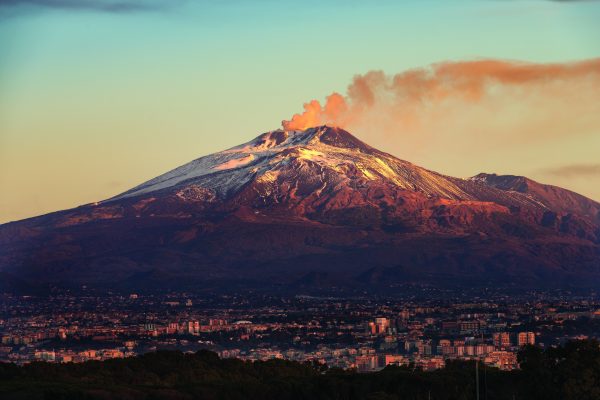Standing between the cities of Messina and Catania, this icon of Sicily is perhaps the world’s most famous volcano.

Hearing Sicilians refer to “her” as “Mamma Etna” you’d be forgiven for assuming that this was a fond reference to a local lady. And to some people Mamma Etna is indeed a living, breathing companion, overseeing – and at times interfering with – life on the eastern coast of Italy’s largest island. To others “she” is the highest Mediterranean island mountain and currently the world’s most active volcano.
The highest area of Mount Etna, inscribed as a UNESCO World Heritage site in 2013 and covering almost 20,000 hectares, has had its nearly continuous volcanic activity documented for 2,700 years. (It’s worth noting that in this time just 77 people have lost their lives to the mountain). Today the National Institute of Geophysics and Volcanology closely observes its activity with a highly sophisticated monitoring system that tracks Etna’s ground vibrations, gas and ash emissions, and low frequency sounds inaudible to the human ear. All to collect data that can indicate exactly what volcanic activity Mamma Etna has in store.
But the scientific community is not the only group allowed to observe the marvels of Mount Etna. Although the core area of the volcano is limited in its infrastructure, with just a handful of mountain and forest tracks and basic mountain shelters, used mainly by those studying the volcano, a buffer zone surrounds the core area with well-established tourist attractions. Jeep tours, hiking treks, wine tours, cruise ships and night-time eruption excursions are all ways to witness this force of nature.
Liked this article? Discover more like it in our archive.
